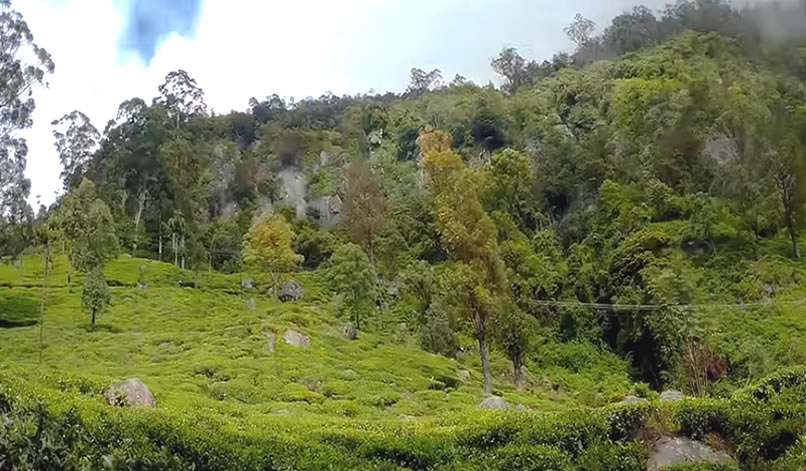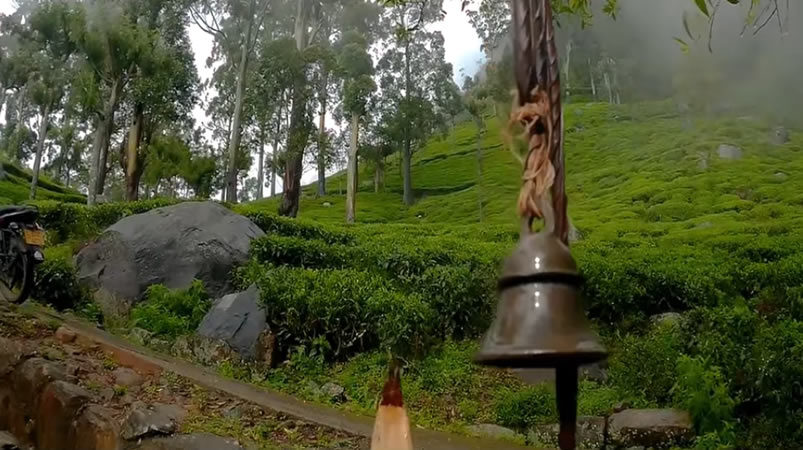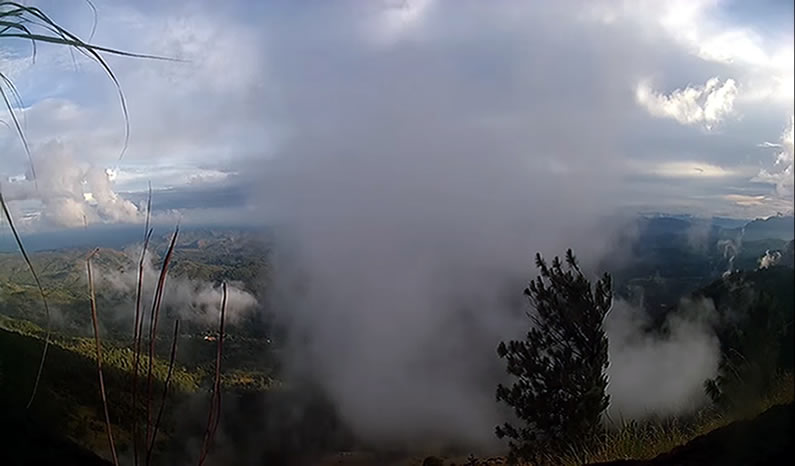Hidden Places In Sri Lanka – The Hidden Himalaya
Table of Contents
- Hidden Places In Sri Lanka – The Hidden Himalaya
- The popular mountain resort of Sri Lanka
- Sabaragamuwa Province
- The village built on Tea
- Narak village
Hidden Places In Sri Lanka – The Hidden Himalaya
The Sabaragamuwa province’s Narak village and beautiful surroundings with tea gardens, peaks and valleys remain so isolated, that foreign as well as local tourists are all but unknown making it one of the hidden places to see in Sri Lanka for discovering the rich Fauna and Flora of Sri Lanka. The village is astoundingly remotely located place on the island where there is no other person for 1km! I believe the people of Narak village have the least crime rate because it is so far from civilization. However, being in a remote village and isolation does not mean that you are safe. The most acute shortage in Narak village is access to facilities required by modern people. Access to hospitals, supermarkets, cinemas and most other facilities are out of reach in the village.
Google the name “Narak Village” and Google does not have any record regarding this remote Sri Lankan village, it is one of the hidden places in Sri Lanka, and only a few people know about its existence of it. However, your search come-up with a result showing several websites with information on Narak Village, but none of them represents the Narak village found in Sri Lanka.
The popular mountain resort of Sri Lanka
Most travellers head on to Nuwara Eliya if they wish to explore the mountains of Sri Lanka; however, the problem with Nuwara Eliya is that the city has become more touristy than most Sri Lankan cities due to its popularity as a holiday destination.
From accommodation to meals, transportation and the prices of all bits and pieces required by tourists are also having touristy price another word very expensive. Another problem with Nuwara Eliya, due to its popularity as a holiday destination is somewhat less interest of people in being friendly to tourists because people are now used to tourists.

The Narak village which features in this article is also sharing the same central mountain range as Nuwara Eliya; however, the attitude of the people of Narak village is a bit different from the people of Nuwara Eliya.
The majority of the people in Narak village are Hindus and working in tea plantation, and working in tea plantation is the main income for the people in the village. The people are still wearing traditional clothing their lifestyle is also very traditional, the villagers are very happy to see the travellers because they are rarely visited by the tourists.
Sabaragamuwa Province
Sabaragamuwa is not coming under the top tourist places in Sri Lanka, however, it offers many interesting places like Belihuloya. Sabaragamuwa is one of the nine provinces of Sri Lanka with a vast variety of landscapes and rich biodiversity. But due to the remoteness from Colombo, the region is considerably behind the other provinces with regards to the development and the people are living with basic infrastructure facilities, and most cities in Sabaragamuwa are yet to go a long way before reaching a considerable development.
Therefore this rural province is categorized as an underdeveloped area of Sri Lanka. However, Sabaragamuwa province is not poor with natural assets; it has many patches of forests, mountains, rivers, lakes, and cascading waterfalls within its borders.
A large tract of land in the province is covered with evergreen tree canopies and it consists of many patches of rainforests and plantations. Due to the high rainfall, high elevation and low temperature Sabaragamuwa is one of the best places for tea cultivation in Sri Lanka. Everywhere you look it is lush green vegetation and visitors are lavishly rewarded with awe-inspiring scenery.

The village built on Tea
Balangoda is a leading city in Sabaragamuwa with a sizable number of tea and rubber plantations, and the history of tea planting in Sabaragamuwa is dating back many hundred years.
Imperial is a tea plantation initiated in the early days of the tea industry of Sri Lanka (1800s). Narak village is part of the Kanperial tea plantation and tea is the main source of income for the people living in Narak village, at least one member of every family living in the Narak village is employed in the Kanperial tea plantation
Narak village
This remote village is located well over most villages and cities in Sabaragamuwa province. It is situated at a very high-altitude, 7200 feet above sea level, and only a few cities on the island lie at this altitude. Therefore Narak village is considered to be one of the villages that lie at a very high altitude on the island.
The village is so unchartered by visitors that the road which leads to the village has no name boards or signs, making it difficult for the travellers to navigate without the assistance of a local guide. The village is about 50 kilometres from the nearest city (Balangoda) and the road that leads to the village is very narrow and should be used very cautiously.
The narrow road is the line-up with mountains from one side and on the other side is the slanting face of the mountain. The rapid slope is more than a thousand feet deep.
The road is very narrow and it can accommodate only the small vehicles and several dozens of sharp bends make it more difficult and dangerous to traverse. The travellers need to be prepared to spend around five hours careening around hairpin bends that snaked about 500m up from the foothills of the mountain.
What is most fascinating about this charming village is the richness of natural scenery. The surrounding low-level area looks like a green blanket which spreads thousands of kilometres in all directions.
The mountains with the green cap are always in touch with clouds and thick fog. The temperature in the village is very low most of the time, especially after the sunset. From the access road to vegetation, climate, geographical location and everything related to this beautiful village are unique.
Today about 30 families are living in the village and the number of people is nearly 200. Due to the high altitude, the village is under the influence of strong wind and a cool climate.
Three months from June blows the most forceful wind and it lifts the roofs of the houses in some instances. Therefore the people have put extra weight on their roofs in order to protect their shelter. In the windy days, it can be dangerous to travel on this road and one can even be drifted away leaving no chance of escaping.
At the end of the road to the Narak village, starts the narrow path, which leads to the end of the world (Horton Plains) and the path is only two kilometres long. Even though it is not being used for trekking, this path can be a handy trek for adventure holiday lovers in Sri Lanka.
This beautiful village and its beautiful environment are largely unknown to most people on the island. Difficulty in travel and remoteness are the other major reasons that keep people away from the village. Perhaps in the future, when the infrastructure is developed this beautiful village will come into light as a holiday destination and attracts some adventure as well as nature lovers.
Visitors can enjoy the awe-inspiring beautiful scenery of the surrounding valleys and mountains and the visitors are rewarded with refreshing, fresh air for breathing. But, on the other side, the villagers are very poor and live under very poor fasciitis.
The village is astoundingly remotely located place on the island where there is no other person for 1km! I believe the people of Narak village have the least crime rate because it is so far from civilization. You won’t be robbed or attacked here, because the village is so poor and remote it is a loss for the robbers to venture into this village.
You should not be afraid of vehicle accidents since you encounter a vehicle very rarely here. If there is a vehicle it is the tractor of the nearby Tea factory, which collects tea leaves. The air is very clean pure and refreshing.
The water originated from a natural spring up in the mountains and is free of foreign particles. The sparkling water that these people drink is unbelievably clean. Even though the village is remote and hidden in the lush green forest there are no wild animals here.
However, being in a remote village and isolation does not mean that you are totally safe. The most acute shortage in Narak village is access to facilities required by modern people. Access to hospitals, supermarkets, cinemas and most other facilities are out of reach in the village.






